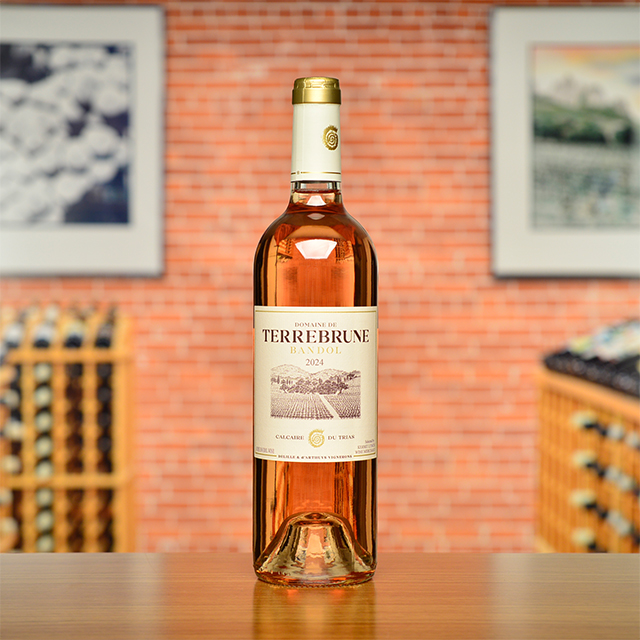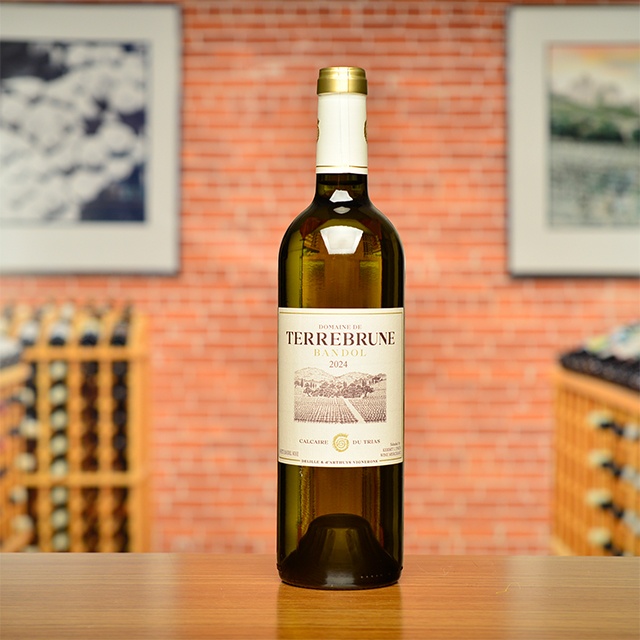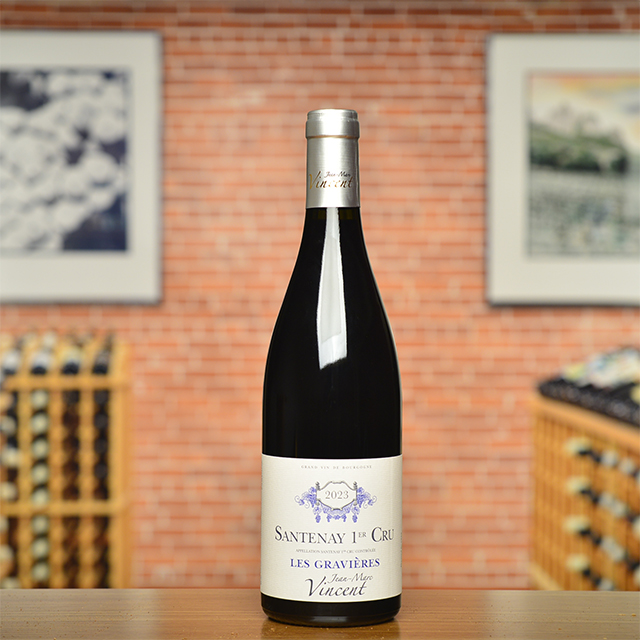Notify me
2015 Bandol Rouge
Domaine de Terrebrune
Reynald Delille’s Bandol rouge is a different animal than most, more finesse than raw power. The domaine’s vineyards obviously play a part—situated on limestone bedrock and cooled by Mediterranean breezes—as does a strict organic regimen. The wine really starts to shine after a few years in bottle, when the earthy, savory, mineral elements begin to peek through the youthful fruit. We’re seeing that with the 2015 vintage, a special library release direct from the domaine’s cellars.
—Dustin Soiseth
| Wine Type: | red |
| Vintage: | 2015 |
| Bottle Size: | 750mL |
| Blend: | 85% Mourvèdre, 10% Grenache, 5% Cinsault |
| Appellation: | Bandol |
| Country: | France |
| Region: | Provence |
| Producer: | Domaine de Terrebrune |
| Winemaker: | Reynald Delille |
| Vineyard: | 20 years average |
| Soil: | Limestone pebbles in brown clay, blue limestone bedrock, marl |
| Aging: | Wine ages in oak foudres for 18 months |
| Farming: | Organic (certified) |
| Alcohol: | 14.1% |
More from this Producer or Region

2021 Bandol Rouge “La Tourtine”
France | Provence
There are few pleasures like aged Bandol rouge from Tempier.

2024 Bandol Rosé
France | Provence
A terroir-driven rosé redolent of a Provençal summer with notes of thyme and white peach, and a mouthwateringly salty finish.

2020 Bandol Rouge
France | Provence
Here is a full-bodied dose of Terrebrune terroir you can enjoy over the next thirty years.

2024 Méditerranée Blanc
France | Provence
Bursting with exuberant floral aromas and fragrant summer fruit, it boasts low alcohol and a zippy acidity.

2021 Bandol Rouge “La Migoua”
France | Provence
At the domaine's highest-elevation site, Mourvèdre's might is gently enveloped by Grenache and Cinsault to yield a Bandol of great finesse.

2023 Bandol Rosé HALF BOTTLE
France | Provence
Peach-scented Bandol rosé is the bee’s knees on a warm summer afternoon.

2023 Vin de Pays du Mont Caume Rouge “Terre d’Ombre”
France | Provence
A vivid purple color, it is akin to fresh-pressed wild berries and perfumed hints of flowers and pepper, without the dense, grippy tannin characteristic of a true Bandol.

2023 Bouches-du-Rhône Blanc “Baume Noire”
France | Provence
It is a seafood lover’s dream wine.

2024 Bandol Blanc
France | Provence
This mineral blend has an ethereal perfume, reminiscent of blossoming flowers with a hint of fennel.

2024 Les Baux de Provence Rosé “Petra”
France | Provence
Beautiful color, fresh-squeezed citrus and stone-fruit nose, luminous and invigorating while round and luscious at the same time.
About The Producer
Domaine de Terrebrune
About The Region
Provence

There is perhaps no region more closely aligned with the history of Kermit Lynch Wine Merchant than Provence. While Kermit began his career as a Burgundy specialist, he soon fell in love with Provence and its wines, notably the legendary Bandols of Domaine Tempier, which he began importing in 1977. He later began living in the area part-time, returning frequently between tasting trips, and today he spends most of his time at his home just outside of Bandol.
Provence is thought to be France’s most ancient wine region, established when Greek settlers landed in the modern-day port city of Marseille in the 6th century BC. The conditions here are ideal for cultivation of the grapevine, with a hot, dry climate and a prevalence of poor, rocky soils, primarily limestone-based, suitable for vines and not much else. The ever-present southern sunshine as well as the mistral, a cold, drying wind from the northwest that helps keep the vines free of disease, are crucial elements of Provençal terroir. Wild herbs from the pervasive scrubland, called garrigue, and cooling saline breezes from the Mediterranean also contribute to the quality and character of wines in all three colors.
Provence is well known for its rosés, but red wines have always held importance here. The very best, such as those from Bandol, possess great depth and a capacity for long-term aging. The white wines, notably those of Cassis, offer weight balanced by a maritime freshness, making them ideal pairings for the local seafood. Mourvèdre reigns king for red grapes, supported mainly by Grenache and Cinsault, while Clairette, Marsanne, Rolle, and Ugni Blanc are the region’s principal white grapes.
More from Provence or France
2023 Bouches-du-Rhône Blanc “Baume Noire”
Clos Sainte Magdeleine France | Provence
Les Baux de Provence Olive Oil “Les Baux”
Moulin Jean-Marie Cornille | Provence
2024 Bandol Rosé
Domaine du Gros ’Noré France | Provence
2021 Bandol Rouge
“La Tourtine”
Domaine Tempier France | Provence
2024 Méditerranée Blanc
Clos Sainte Magdeleine France | Provence
2016 Bandol Rouge
Domaine Tempier France | Provence
2023 Alpilles Blanc “Jaspe”
Domaine Hauvette France | Provence
2020 Alpilles Rouge “Amethyste”
Domaine Hauvette France | Provence
2023 Vin de Pays du Mont Caume Rouge “Terre d’Ombre”
Domaine de Terrebrune France | Provence
2017 Alpilles Blanc “Dolia”
Domaine Hauvette France | Provence
2024 Bandol Rosé
Domaine de Terrebrune France | Provence
2022 Alpilles Rouge “Grenache”
Domaine Hauvette France | Provence
2023 Bouches-du-Rhône Blanc “Baume Noire”
Clos Sainte Magdeleine France | Provence
Les Baux de Provence Olive Oil “Les Baux”
Moulin Jean-Marie Cornille | Provence
2024 Bandol Rosé
Domaine du Gros ’Noré France | Provence
2021 Bandol Rouge
“La Tourtine”
Domaine Tempier France | Provence
2024 Méditerranée Blanc
Clos Sainte Magdeleine France | Provence
2016 Bandol Rouge
Domaine Tempier France | Provence
2023 Alpilles Blanc “Jaspe”
Domaine Hauvette France | Provence
2020 Alpilles Rouge “Amethyste”
Domaine Hauvette France | Provence
2023 Vin de Pays du Mont Caume Rouge “Terre d’Ombre”
Domaine de Terrebrune France | Provence
2017 Alpilles Blanc “Dolia”
Domaine Hauvette France | Provence
2024 Bandol Rosé
Domaine de Terrebrune France | Provence
2022 Alpilles Rouge “Grenache”
Domaine Hauvette France | Provence
Vintage Chart Mentality

Vintage Chart Mentality
Trust the great winemakers, trust the great vineyards. Your wine merchant might even be trustworthy. In the long run, that vintage strip may be the least important guide to quality on your bottle of wine.—Kermit Lynch

















